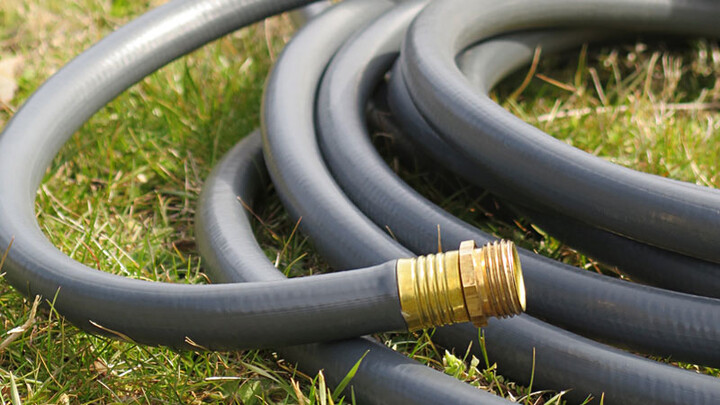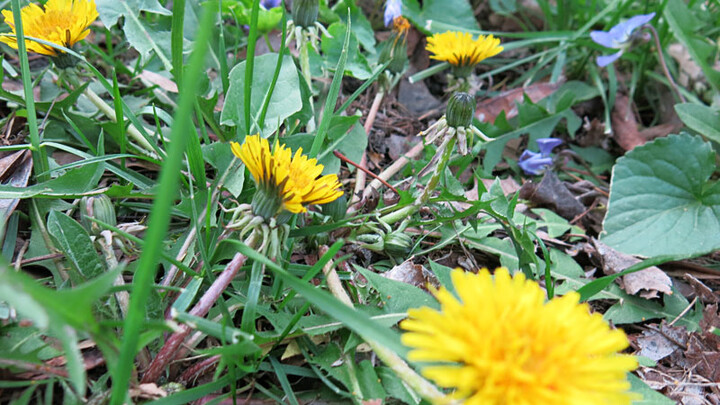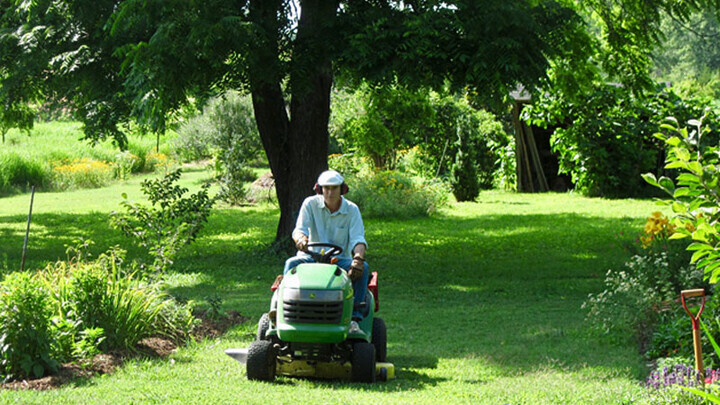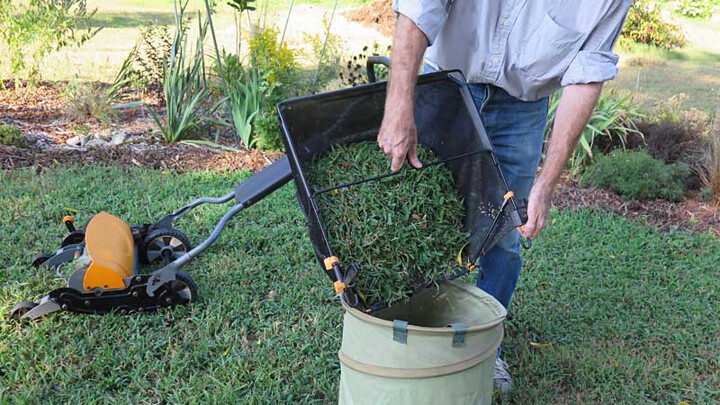It’s great to get out to the garden in spring. Birds are singing, flowers are coming into bloom, and the soft, sparkling light makes the world look fresh and new. After you admire the season’s first daffodils, it’s time to start tending to your lawn in preparation for a season of lush growth.

1.Check your hoses
It’s important to start the new gardening season with the right tools, and a sturdy hose is the most important of all. Gilmour’s Flexogen Super Duty Hose has a patented eight-layer construction which makes it light and durable at the same time. It hardly kinks and can be dragged around without getting beat up. The outer layer also resists UV damage, which gives you peace of mind when the hose is left outside throughout the season. Brass couplings with rubber washers screw snugly to spigots and watering tools.
When you’re shopping for a hose, make sure you buy a hose long enough to water the whole lawn and reach all of the flower beds. Flexogen hoses come in several lengths, from 25 to 100 feet. (See the “Hose Shopping 101” article on Gilmour.com for a complete hose shopping guide.)

2.Water the right way
The best time to water your lawn is when it needs it. In the beginning of the season you don’t have to rush. When grass starts growing, it’s the roots that grow first. If the ground is a little dry, they grow deep into the soil. These deep roots help grass survive drought. So holding off on watering at first is actually good for your grass.
However, if you walk across the lawn and the blades of grass do not spring back in your footsteps, it’s time to water. Gilmour’s Pattern Master Circular Sprinkler can be customized so the spray pattern matches the shape and size of your lawn. You won’t waste a drop on the sidewalk. And with the Quick-Connect set with Auto Shut-off, you can switch from the sprinkler to other watering tools without getting wet or having to turn the water off at the spigot.

3.Fill in the blanks (with seed or sod)
Don’t leave bare patches in the lawn unattended because weeds will find them. Fill in bare spots with grass seed or with a sod patch. Whichever you choose, first prepare the soil. Weed if necessary, and loosen the surface of the soil with a rake.
If you’re planting grass seed, first, sow the seeds, then cover lightly with a few handfuls of fresh topsoil and tamp the soil down. For sod, cut the patch to fit and press it firmly into the soil. Good soil contact is important for both seeds and sod.
Now water well. Seeds must be kept moist until they germinate. You may need to water daily or even more often in hot weather. Use Gilmour’s Thumb Control Watering Nozzle or a small stationary sprinkler to get the job done. Sod should also be kept moist, but not soggy.

4.Keep weeds under control
A healthy lawn resists weeds, but a few interlopers are inevitable. It only takes a few minutes to grub out dandelions or pull chickweed from the lawn. If hand weeding is not an option, look for an appropriate organic herbicide. Take a weed to your local garden shop and ask the experts for advice. Use the recommended organic herbicide only in the areas where weeds are a problem. Make sure to follow label directions as more is not always better.
Weeds compete with grass so pull them in spring before they spread or go to seed. This will eliminate the competition and help get your lawn off to a good start.

5.Get your lawn mower ready for the season.
A lawn mower works hard during the gardening season. Before it’s time to start mowing, have your mower serviced. Technicians will check the starter, air filter, belts, spark plug, and battery. They’ll also make sure the blade is sharp. Dull mower blades rip grass instead of cutting it, leaving a ragged cut that is vulnerable to diseases. Keep your mower clean through the season with a concentrated spray from a cleaning nozzle.
Rake your lawn to remove any leaves or twigs. The first time you mow, set the mowing height about ? inch lower than normal, to break up light debris. After that, set the mowing height back up to prevent injuring your lawn and leaving an opening for crabgrass and other weeds to settle in.

6.Don’t bag it
Grass clippings are a great source of nutrients for the lawn. They are full of nitrogen, which lawns need, and decompose quickly, becoming free fertilizer. Instead of bagging clippings, let your mower do the job of chopping and recycling them back into the soil.
If you prefer not to leave clippings on the lawn, catch them and toss into the compost pile. The added nitrogen from the clippings will heat up the pile, speeding the decomposition process. You can also use them as mulch under shrubs and around plants in flowerbeds. Spread the clippings lightly around plants to a depth of about one inch. If they’re wet, allow time to for them to dry before use.
7.Wait to fertilize
The shelves at garden shops are stacked high with lawn fertilizers. However, no matter what type of grass you grow, spring is not the time to fertilize. Giving your lawn a dose of fertilizer in early spring will encourage rapid growth, which means you’ll have to mow sooner and more frequently. It also gives a boost to weeds.
Cool-season lawns that remain green through the winter (bluegrass, rye) are best fertilized in fall (after Labor Day). Warm-season lawns, which become dormant in winter (zoysia, bermudagrass) should not be fertilized until they emerge from dormancy.
It’s a good idea to wait until the fourth mowing to apply fertilizer to warm-season lawns.
When the time comes to fertilize, buy a product designed for your climate and for the type of grass in your lawn. Follow the directions on the label and do not over-fertilize. Clean up any fertilizer on sidewalks, so it doesn’t wash off into streams, rivers, and water well.